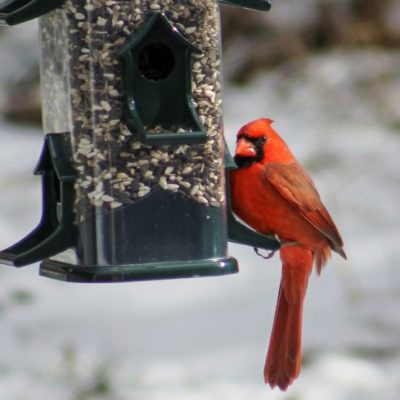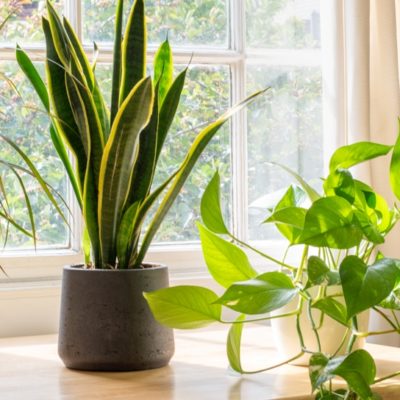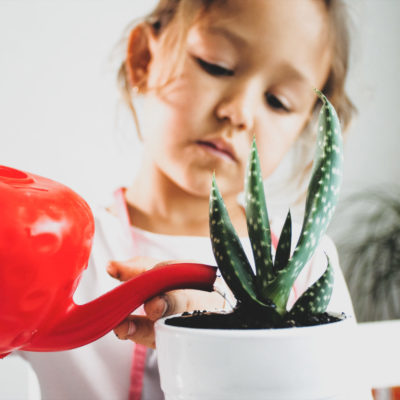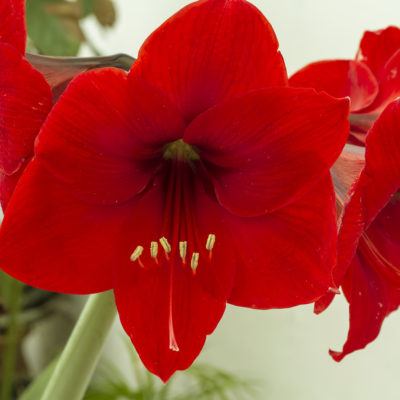
Herb Gardening: Harvesting and Preserving Flavour
If you’ve been growing your herbs outdoors, you’ll have noticed how much they grow in just a few short weeks with all that bright sunshine and fresh air! And most herbs will continue to thrive through the season, so long as they receive regular deep waterings (especially during the summer) and an all-purpose fertilizer every two weeks to keep up with their nutritional needs. But how do we get all that delicious flavour from the planters to our plates?
Herbs can be harvested as needed throughout the growing season. You can pinch or snip off a few young leaves as needed, or wait until the plant is grown to harvest a larger portion. To harvest fresh herbs, pinch or snip off what you need from the tips of the plant, keeping the older, larger leaves on the stems to continue absorbing as much energy from the sun as possible. Rinse your freshly snipped herbs with water and pat dry on a paper towel before adding to your favorite dishes.
Basil, Stevia, Oregano, Rosemary, Thyme, Mint, and Sage can all have their tips snipped regularly, which will also help them branch out to create more delicious foliage. Herbs that grow their foliage at ground level, like Lemongrass and Chives, need to be cut close to the soil. Lavender and Chamomile get their flavour from their blooms, so you’ll have to be patient until they start to flower (bonus: deadheading means more energy for more flower buds!)
Dill and Cilantro/Coriander have 2 stages of harvesting: their leaves can be picked as needed like the others, and you can harvest their seeds after they’ve finished blooming for even more delicious flavour. Dill flower heads are essential for pickling recipes, while Cilantro seed pods are filled with Coriander seeds!
But what if the season is coming to an end, and you still have lots of tasty herbs to use up? Yes, some herbs can be brought indoors, but they’ve become accustomed to the long days of summer and often will not adjust well to indoor living over the winter. The best varieties to bring indoors to over-winter are Bay Laurel and Rosemary.
But not to worry, because herbs are also super easy to dry or freeze to keep their fresh flavours handy all year long! Just make sure you harvest the plants before the fall frost.
Drying Herbs:
- 1) Snip off all stems, rinse and pat dry.
- 2) Tie stems into small bunches with string/ribbon.
- 3) Hang to dry in a low traffic area where the bundles won’t be disturbed too often, preferably at shoulder height or higher. You could also use a food dehydrator to speed up the process.
- 4) Leave your herb bunches to dry completely; this can take days to months depending on the variety and your home environment (sunlight, humidity, etc.)
- 5) Once completely dried, remove all leaves from the stems and place in an airtight container. Remember to label them!
- 6) Store containers away from heat and light to preserve their flavour.
Best Herbs for Drying: Basil, Cilantro, Chives, Dill, Lemon Balm, Mint, Oregano, Parsley, Rosemary, Sage, Tarragon, Thyme.
Freezing Herbs: Snip off all stems, rinse and pat dry. There are 3 options for freezing herbs:
- 1) Flat Freezing – Place stems in a single layer inside a (labeled) freezer bag and freeze flat. Remove frozen stems as needed and crush into cooked dishes.
- 2) Ice Cubes (Water) – Chop herbs and pack tightly into ice cube trays. Add enough water to cover then freeze. Once frozen, remove from trays and store in a (labeled) freezer bag or container. Great for making flavoured iced drinks!
- 3) Ice Cubes (Oil) – Chop herbs and blend with enough oil so that the mixture can be easily poured into ice cube trays. Freeze until solid, then remove cubes and store in a (labeled) freezer bag or container. Makes easy pesto for future pasta nights!
Best Herbs for Freezing: Basil, Dill, Fennel, Mint, Oregano, Parsley, Rosemary, Sage, Tarragon, Thyme
*Remember your Herbs 101: Nearly all herbs needs at least 4-6 hours of direct sunlight every day; check your plants daily and let them dry out slightly between deep waterings; use an all-purpose fertilizer every 2 weeks for added nutrients; herbs are very sensitive to temperatures under 10°C (day or night) and cannot handle frost.





